
Presentation of the vision of the studio Liberec before the city councilors
On Thursday, November 24, 2011, Jiří Janďourek and Zdena Zedníčková presented the results of a year-long effort by students and educators from the Liberec studio at the Faculty of Art and Architecture of the Technical University of Liberec during an afternoon city council meeting. Their presentation to thirty-five council members preceded the final submission of the project at the end of November this year. The project's presentation was placed third on the agenda of the busy meeting. Jiří Janďourek had to condense the results of a year of intense work into fifteen minutes for a lay audience. After a brief introduction to the analyses, he quickly outlined the potential for the city's development and possible strategies for its growth. In addition to highlighting its strengths (the seat of education and the city's sporting spirit), he did not fail to mention weaknesses (a fractured historical identity and physical division by the railway) and primarily answered the fundamental question of why Liberec should change and have its vision.
In today's world, where cities openly compete with each other, it is important not to think short-term but to have a long-term vision to which one can relate. According to Jiří Janďourek, in the case of Liberec, it is primarily about restoring the city's identity that has faded into its surroundings. People can identify much better with Ještěd and the surrounding mountains than directly with the city in which they live. Just as the railway helped revitalize the city in the 19th century, the potential of the local university can contribute to the development of business incubators and transform Liberec into the 'Silicon Valley of the North' in the 21st century. For cities to thrive, they must continuously renew themselves, not only within but also in relation to their surroundings. Therefore, the Liberec studio mentions the potential for closer cooperation with the nearby town of Jablonec nad Nisou, but points to the natural linear blend of several towns along the Nisa River from the Polish Jelenia Góra to the German Zittau.
Who wouldn't want to live in a city that allows for living in a clean and healthy environment in the center? However, the Liberec studio adds clearer contours to these appealing statements in the form of clear instructions on how to achieve this. It divides the city's building structure into two clearly readable axes. One is calm and follows the current tram line, while the other dynamic axis follows the path of today's highway. At the intersection of these axes, a 'transferium' and the most significant traffic hub in the city should be created. Another of the recommended principles should be firmly established boundaries, densification of the center, encouragement of polycentrism, and specificity of individual neighborhoods. The city's boundaries should only open based on the natural morphology towards Jablonec and Hrádek, supporting the beneficial emergence of a conurbation and preventing the surrounding meadows from being built over.
After the council members were briefly acquainted with the project, an extensive discussion ensued, oscillating from entirely practical questions to philosophical reflections on the meaning of visions. Some council members initially expected only minor interventions and advice for immediate improvements. The feasibility of the bold visions did not seem plausible to them even in the time frame of the next fifty years, and they compared the intentions of the Liberec studio to the proposed giant transportation constructions in the spatial plan, which also would likely not ensure a more valuable life in the city center.
In response to questions about what the next step should be and expressed doubts that they saw no further direction, Jan Korytář answered clearly that the purpose of visions is to look ahead, present inspiring plans, and try to come a little closer to them in reality. Having a vision is one of the most valuable materials. The project comes with an alternative perspective so that a sense of hopelessness does not arise that there is nowhere to go. Visions should unleash imagination and determine direction.
The resulting project of the Liberec studio has wings, which, however, firmly rest on the opinions of experts, foreign examples, dozens of hours of discussions on academic grounds, and hundreds of hours of processing final plans. In a short time frame, it was not possible to familiarize the council members in more detail with the extensive analyses and mapping materials that will be part of the final three-part publication, but the Liberec studio is already offering to bring its project closer to interested parties at another seminar and also to present it to the representatives of Jablonec n/N. or the Liberec region.
In the past, the potential of the local university with a rich architectural tradition has not been sufficiently utilized, and the city hall could intensify cooperation in the future, for example at the level of a consulting platform. In the end, everyone agreed that this was certainly not the last meeting of the council members regarding the vision of Liberec. This was the first tangible step to stimulate discussion, which should transfer among citizens and be deliberated across parties, so that everyone can identify with the intent and aim for it in the long term. There should be consensus across the political spectrum on the resulting vision, which would allow it to span multiple electoral terms and thus provide a greater chance for realization.
More information >
In today's world, where cities openly compete with each other, it is important not to think short-term but to have a long-term vision to which one can relate. According to Jiří Janďourek, in the case of Liberec, it is primarily about restoring the city's identity that has faded into its surroundings. People can identify much better with Ještěd and the surrounding mountains than directly with the city in which they live. Just as the railway helped revitalize the city in the 19th century, the potential of the local university can contribute to the development of business incubators and transform Liberec into the 'Silicon Valley of the North' in the 21st century. For cities to thrive, they must continuously renew themselves, not only within but also in relation to their surroundings. Therefore, the Liberec studio mentions the potential for closer cooperation with the nearby town of Jablonec nad Nisou, but points to the natural linear blend of several towns along the Nisa River from the Polish Jelenia Góra to the German Zittau.
Who wouldn't want to live in a city that allows for living in a clean and healthy environment in the center? However, the Liberec studio adds clearer contours to these appealing statements in the form of clear instructions on how to achieve this. It divides the city's building structure into two clearly readable axes. One is calm and follows the current tram line, while the other dynamic axis follows the path of today's highway. At the intersection of these axes, a 'transferium' and the most significant traffic hub in the city should be created. Another of the recommended principles should be firmly established boundaries, densification of the center, encouragement of polycentrism, and specificity of individual neighborhoods. The city's boundaries should only open based on the natural morphology towards Jablonec and Hrádek, supporting the beneficial emergence of a conurbation and preventing the surrounding meadows from being built over.
After the council members were briefly acquainted with the project, an extensive discussion ensued, oscillating from entirely practical questions to philosophical reflections on the meaning of visions. Some council members initially expected only minor interventions and advice for immediate improvements. The feasibility of the bold visions did not seem plausible to them even in the time frame of the next fifty years, and they compared the intentions of the Liberec studio to the proposed giant transportation constructions in the spatial plan, which also would likely not ensure a more valuable life in the city center.
In response to questions about what the next step should be and expressed doubts that they saw no further direction, Jan Korytář answered clearly that the purpose of visions is to look ahead, present inspiring plans, and try to come a little closer to them in reality. Having a vision is one of the most valuable materials. The project comes with an alternative perspective so that a sense of hopelessness does not arise that there is nowhere to go. Visions should unleash imagination and determine direction.
The resulting project of the Liberec studio has wings, which, however, firmly rest on the opinions of experts, foreign examples, dozens of hours of discussions on academic grounds, and hundreds of hours of processing final plans. In a short time frame, it was not possible to familiarize the council members in more detail with the extensive analyses and mapping materials that will be part of the final three-part publication, but the Liberec studio is already offering to bring its project closer to interested parties at another seminar and also to present it to the representatives of Jablonec n/N. or the Liberec region.
In the past, the potential of the local university with a rich architectural tradition has not been sufficiently utilized, and the city hall could intensify cooperation in the future, for example at the level of a consulting platform. In the end, everyone agreed that this was certainly not the last meeting of the council members regarding the vision of Liberec. This was the first tangible step to stimulate discussion, which should transfer among citizens and be deliberated across parties, so that everyone can identify with the intent and aim for it in the long term. There should be consensus across the political spectrum on the resulting vision, which would allow it to span multiple electoral terms and thus provide a greater chance for realization.
More information >
The English translation is powered by AI tool. Switch to Czech to view the original text source.
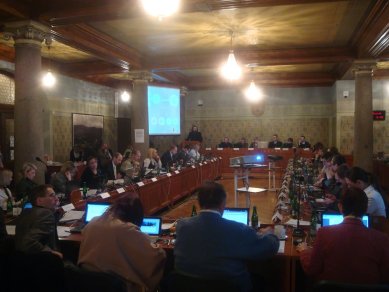
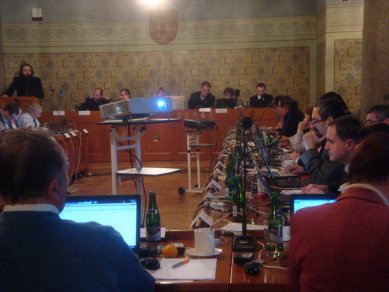
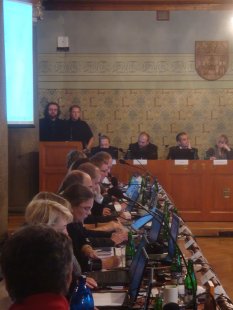
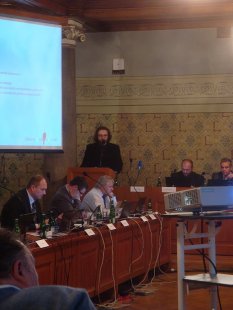
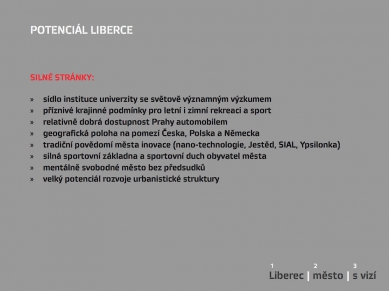
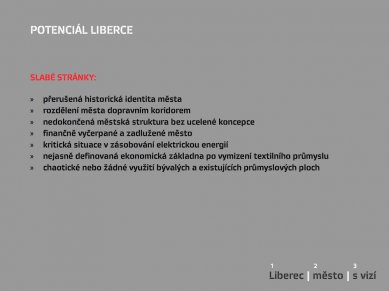
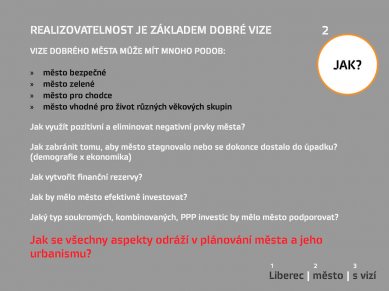
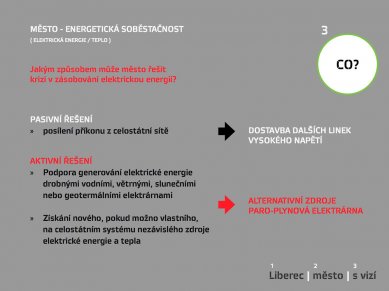
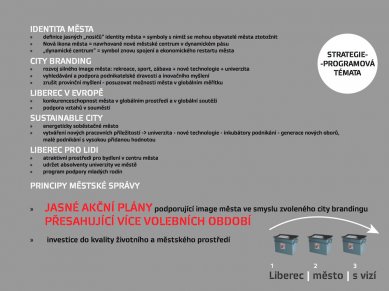
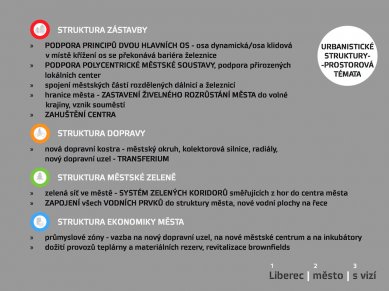
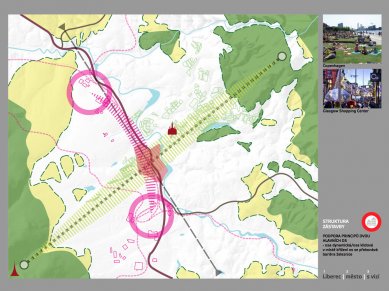
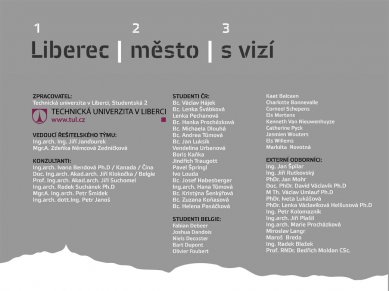
0 comments
add comment







